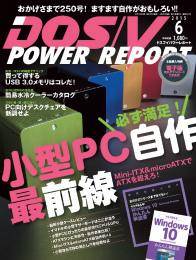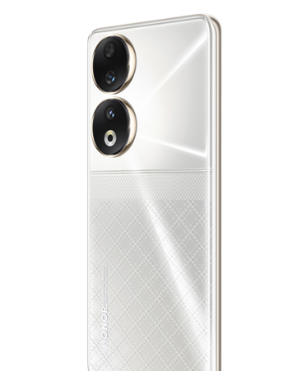Inadvertently pressing the Delete button, hard disk drive errors, and sometimes data loss incidents occur when using a computer. This time, I will show you how to deal with such incidents.
Data recovery software is not as major as antivirus software. Antivirus software is often bundled with computers, but little attention seems to be paid to data recovery software. Microsoft offers Windows Defender as an anti-spyware, but interestingly it doesn't dabble in data recovery. There is a Windows Recovery Console, but it's useless if Windows can't read the problematic drive.So, you don't really know where to turn for help when you lose important data. If so, check out this article for a solution.
・Problem sortingEven if you say "Data disappeared!", there are many possible situations. If you deleted some files or formatted the drive and want to recover some or all of your data, skip to the "Data Recovery Software" section below. The big deal here is to stop using that drive now. Depending on the form of the drive, there are many ways to say eject, remove, stop, etc. Anyway, let's do what is necessary to prevent the OS from writing to the drive. If you don't do this soon, it will be much harder to get your data back.
If your drive has been scratched, crushed, dropped, or dropkicked and your drive is making strange noises, it's best to take it to a professional data recovery company. . Unless you are such a contractor yourself, there is little you can do on your own.
If there doesn't seem to be a physical problem with the drive, there are two things to consider. If your computer can see the drive but does not recognize it as working, it may have a corrupted file system. It could be a whole drive problem or something wrong with the file allocation table. As long as the drive is working, it should vibrate or make some noise, and data recovery is most likely possible.
However, if you have a RAID configuration and it is not recognized, or if you have more than one partition on the drive and the OS cannot see them all, the problem is much deeper. Read the "Data Recovery Software" section and see if there's anything that might help.
As with all things RAID, errors in RAID can be equally complicated. Basically, it seems difficult for free software to solve all problems with RAID configurations. RAID issues can also be hardware controller issues. (Hereafter, this article also touches on RAID for each software, but basically single drive configuration is the main target.)
・About flash drives and non-Windows operating systemsMost of this article applies to hard disk drives, but not to SSDs. However, the data recovery software mentioned here can also help you with flash drives, SSDs and floppies. The great thing about SSDs is that they have no moving parts, so they are less susceptible to bumps. Also, since this article is written mainly for Windows, Linux is cross-platform if it's a physical issue, but it's not so when it comes to software. But don't worry, we'll tell you in this article whether it works with your OS or not.
・When you accidentally clickBefore formatting the drive or deleting files, the OS will ask you to make sure you understand what you are doing. Even so, we sometimes make the mistake of erasing important data, shunning even the kindness of the OS.
That's when the operating system's safety net, aka the "recycle bin," comes to the rescue. If you accidentally deleted a file, check your Recycle Bin before panicking. If it's not there, see the "Data Recovery Software" section.
As I said above, in any case, stop using the drive immediately if you notice that any files are missing. It sounds verbose, but it's drive, use, stop.
Why? The OS is constantly writing data to the hard drive. This is not limited to when the user saves a file or does something else. When a file is erased, its data remains on the drive in an uncertain state. The filesystem sees the data as part of the deleted file, so the OS can't see it anymore. Therefore, if the OS recognizes that the location where the file was vacant and continues to use that drive, the OS will overwrite it at some point. Once files are overwritten, they are nearly impossible to recover.
Need a spare driveIt sounds obvious, but don't try to recover files on the same drive that you want to recover. It's like trying to cut off a branch from the tree you're riding on. If you want to recover a flash drive, save the files to your computer's hard drive. If it's an external drive, make sure you have enough space for the amount of data you're restoring to another drive.
And don't boot your computer from the same drive you're trying to recover from. That doesn't work. Either run the recovery software from an optical disk or flash drive, or take the drive containing the OS out of the computer and put it into another setup and pull the data from there.
・Data recovery softwareFlash drives and cards are everywhere. Mobile phones, digital cameras, camcorders, etc. Recovering files from these is as easy as downloading, installing and running free software.
![[How To] I want to get back lost data, and it's (almost) free and easy! [How To] Remove missing data I want to get it back, and it's (almost) free and easy!](https://website-google-hk.oss-cn-hongkong.aliyuncs.com/drawing/article_results_9/2022/3/30/49285f35d6b8c6008516a5b412e3f244_1.jpeg)
What kind of software? Let's start with Piriform's Recuva. This has saved us many times. It's free, simple, and fast. Just install it, open it, point to the drive you want to scan, and Recuva will do the rest. It also restores the original filename if the necessary information remains.
On the left side of the GUI, you can see the file name and path, last modified date, size, and whether or not the file can be recovered. Green, orange, and red buttons next to filenames are visual indications of recoverability. If you're lucky, you'll see a preview image on the right.
Recuva works with hard drives, flash drives, digital camera cards and MP3 players, but only for Windows. Data from Outlook Express, Thunderbird and Windows Live Mail can also be recovered.
Even if you format your drive, Recuva will find as many files as it can find. It can also be used when Word crashes.
There are two settings for Recuva. Deep Scan takes longer than regular scans, but can recover more data. Recuva also has a portable version that you can carry with you on a removable drive. However, it doesn't work well with RAID.
This time, I tried Recuva on a 4GB flash drive that has been used to move data between computers for over two years. Recuva recovered hundreds of files that other free programs (DiskDigger and Data Recovery Wizard) couldn't find at all. In a deep scan, DiskDigger found a few more files, but due to program limitations, it was only able to recover 1GB for free. Data Recovery Wizard also had a 1GB limit, but Recuva doesn't have that limit. With Recuva, there seems to be no need to use other software.
・Repair the File TableSometimes your hard drive looks fine, but Windows doesn't recognize it. I can see the drive letter (C, D, etc.) in Windows Explorer, but Windows asks me, "The drive is not formatted. Do you want to format it now?" But don't format it here. Try TestDisk instead.TestDisk is a very simple free software by CG Security. It's completely free, with no capacity or time limits, but it doesn't even have a GUI. i.e. run it in command prompt.
The file table looks like this. I have a huge drawer full of stuff. Make a list of the contents of your drawer and add a little information about what it is. With that list, you can see which drawers are full and which are empty.
But let's say you lose that list. Nothing has moved or disappeared. It just doesn't have a list of where things are. But without that list, the drawer is empty. Without the file table, Windows sees the drive as a drawer with no list of contents. I know it's a drawer or a drive, but to use it properly, I'd have to flip the contents of the drawer over and reinsert it, or reformat the drive.
The Windows file system format ``FAT32'' stands for ``32-bit File Allocation Table''. Or if it's NTFS format, the file table is named "MFT" (Master File Table), and other filesystems have a different name. Anyway, whatever it's called, TestDisk can be used to restore file tables.
Let me explain the role of TestDisk with the analogy I used above. If you have a copy of the drawer contents list, it's okay if you lose the list. Similarly, Windows actually makes file table backups, but you'll need a program like TestDisk to use them.
The lack of a Windows GUI can be a little confusing, but TestDisk is easy and doesn't take too long. If you're confused by the words on the screen, here's a step-by-step guide (in English). TestDisk runs on a command prompt, uses Linux drive letters (sda, sdb) instead of Windows drive letters (C and D), and uses arrow keys for navigation.
TestDisk displays the size of the drive, the free space, and the manufacturer name side by side. Pick the drive you want to deal with and move it to the partition you want TestDisk to see. On this screen you can see that TestDisk works with Windows, Mac, Linux, Sun and Xbox partitions.
TextDisk is very useful because it works on most computers, but when it comes to RAID, TestDisk only works on Linux. Besides restoring the file table, it can restore boot sectors, files and partitions regardless of the file system used on the drive.
As part of the TestDisk package, you also get PhotoRec, a cross-platform file recovery software. Like TestDisk, PhotoRec uses a command-line interface, but its strength lies in its ability to run on a variety of operating systems. PhotoRec will restore the file, but it will have a different name from the original file name, so you need to check what each file is individually. If you're looking for a specific file or type of file, this is fine, but if you want to restore an entire drive, it can be a huge undertaking.
・Finding a circuit board might help...Hard drives can also fail due to circuit board problems. If the board becomes useless, it may be possible to replace it with the same one if it is found. Check the make and model number of your drive and check out auction sites. If you are lucky, you may find the same drive. However, even if the manufacturer and model number are the same, there are cases where the contents are slightly different depending on the OEM, etc., so there is no guarantee that this method will work.
・Last resort: Ask a professional Mechanical errors happen suddenly. In that case, you have no choice but to turn to a professional data recovery company. But here we need to consider the value of the lost data. The data on the drive must be valuable, but it will cost you a lot to get it back. It is necessary to determine whether the data is worth the cost.A professional data recovery company needs to have its equipment, software, clean environment, inventory of necessary parts, etc., and it all comes at a cost. For minor disabilities, the cost may not be too high. There may be student discounts. But on average, it should be a good amount.
・The ability to recover lost data...Up to this point, I have written about how the person who used the data can recover the data. It is also possible for a third party to recover the information. If you sell your computer or just throw away your flash drive, someone who gets it can use Recuva or PhotoRec to peek inside.
But Recuva can be a great ally here as well. With Recuva, you can overwrite your drive or disk, making it impossible for third parties to recover. You can choose to overwrite once or follow the Gutmann method (one of the main data erasure algorithms) and overwrite it 35 times. The number used by the US National Security Agency is 7, which is a standard, but 35 is fine if you have the time. The number of overwrites is determined by the importance of the data. However, there is no example of restoring overwritten data even once, so realistically, 35 times may not be necessary.
If you just want to ensure that certain files are permanently erased so that they cannot be recovered, take a look at Eraser.
・How to hit a stone bridge with a cane before you fallIn order not to go blank in the unlikely event that the data disappears, it is customary to back it up. There are means. It seems better to think that the software and means written above are the last resort. With continuous backups, in the worst case, only the most recent data is lost.
But even if you keep your files on a separate hard disk drive, you still run the risk of dropping it on the floor. Backed up media is only as safe as media in use. If you work with data such as photo files, documents, music, etc., it's a good idea to put them on a DVD and keep them in several different locations.
In addition, if you download the software I introduced and back it up with other files, it will be convenient when you need it. Better yet, if you're familiar with TestDisk or PhotoRec on a spare hard drive, you'll be ready to go if things go wrong.
[Maximum PC]
Brian Mahoney - MaximumPC (original/miho)

![[How To] I want to recover lost data, and it's (almost) free and easy!](https://website-google-hk.oss-cn-hongkong.aliyuncs.com/drawing/article_results_9/2022/3/30/49285f35d6b8c6008516a5b412e3f244_0.jpeg)


















